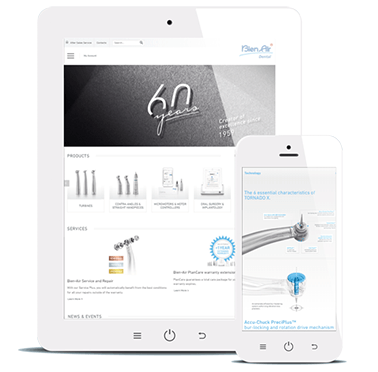It is the process during which we compare expected results with actual results to check for consistency. This allows us to detect errors and identify possible gaps in the system.
At the same time, the tester plays a preventive role, helping to minimize the risk of defects and preparing test reports. These tasks also include assessing the quality of the system under test.
Pyramid of tests
The test pyramid model is a popular approach to software testing that consists of three levels: unit testing, integration testing, and system testing (E2E). Each level focuses on a different aspect of testing and has its unique features. The model is designed to ensure high product quality while minimizing development and maintenance costs.
The test pyramid is a graphical model that shows the relationship between the amount of testing and the level of testing. This means that in the lower levels of the pyramid, such as unit tests, there should be more tests, while in the higher levels, such as system tests, the number of tests should be less.
The model suggests that more emphasis should be placed on testing at lower levels, where the focus can be on checking individual components in detail, while higher levels verify integrations and functionality of the system as a whole.
A test pyramid is used to achieve a balance between different types of testing and maximize testing efficiency. Focusing on unit and integration testing allows early detection and correction of bugs at a lower level, which in turn contributes to improving the quality and reliability of the system.

Unit tests
At the lowest level of the pyramid are unit tests, which focus on verifying the correctness of individual units of code. Such a unit can be a function, method, class, or even a module.
These tests are often written by programmers who create the code. Their purpose is to make sure that each unit works as expected and meets the required conditions.Such tests are created using testing frameworks, such as JUnit for Java or NUnit for C#.
Automation allows tests to be executed quickly and efficiently after each change is made. Basic features of tests can include isolation and repeatability. Tests should be independent of each other and from other units of code so that they can be executed in any order.
A key aspect of this level of testing is to support the construction of stable and reliable software components.
Benefits of unit testing:
- Rapid error detection,
- Ease of debugging,
- Facilitation of refactoring,
- Documentation.
Write to us. We will analyse the need of your business and suggest what tests might work for your company.
Integration testing
At the integration testing level, we focus on verifying the integration of individual software units. These tests verify that these units work properly as a whole when they are connected.

This type of testing may involve testing interactions between modules, components, or systems. The purpose of these tests is to identify problems related to communication, and interfaces that interact within a larger application or infrastructure.
Key aspects of testing:
- Verifying the correctness of integration
- Testing data flow scenarios
- Identifying interface problems
- Verifying the performance of the system as a whole
System tests
These tests are one of the most time-consuming and expensive types of testing in the software development process. They focus on the complete system or application as a whole, verifying that it meets specific requirements and user expectations.
System testing focuses on validating the complete system or application, taking into account all its components, modules, and interfaces.
At this level, it verifies that the system works by the established functional and non-functional requirements. They are usually performed manually by a tester, who simulates various user scenarios and verifies that the software works correctly under different conditions.
The purpose of these tests is functional verification, which will verify that the system performs all specified functions according to user expectations and business requirements.
Testing non-functional aspects serves to assess the performance, scalability, security, and availability of the system. Thanks to the extensive functionality of these tests, it is also possible to assess potential risks associated with the functioning of the system and evaluate its impact on users.
E2E testing
E2E (End-to-End) testing is a software testing technique that aims to simulate real-world use cases, verify all functionality, and check that the system works as expected by the user.
Unlike other types of testing, which focus on individual components or modules, E2E testing checks the integration and cooperation of various components, as well as the flow of data between them. In this way, it is possible to verify that the system works properly as a cohesive unit.
During E2E testing, user interactions are mapped to see if each function meets expectations. The tests cover different paths and usage scenarios to make sure the system responds as expected in different situations. Examples of scenarios may include user registration, login, adding products to a shopping cart, the shopping process, or any other action important to the system idea.
With automation, you can mimic the behavior of the end-user and test every functionality from start to finish. To create automated tests, Cypress is mainly used, which makes it easy to verify the application's performance.In addition, it prepares an automatic test report, including screenshots, videos, or logs.
It is mainly used for testing the front-end, while when testing the backend, Swagger or Postman is often used. It is also more precise and eliminates human error when testing manually. Frequently, they are conducted in production-like environments to reflect the most realistic conditions.

Why is it important to test software?
Software testing plays an extremely important role in ensuring system quality and reliability. By checking the correct operation of the system, you can determine whether certain quality standards and customer requirements are met.
Early identification of errors makes it possible to fix them even before the product is made available to the end user, which contributes to minimizing the risk of irregularities and failures.In addition to the quality aspects, software testing also makes it possible to assess system performance.
Conducting performance tests helps identify areas that will help cause system slowdowns. Software testing is extremely important for quality assurance, checking the correct operation of the system allows you to determine whether quality standards are being met.
This type of action effectively helps minimize the occurrence of errors in the final product. Early identification of errors also increases the reliability of the product and its usability.
During testing, the performance of the system can be evaluated, and possible bottlenecks can be found, which can slow down the system's operation.
Key benefits:
- Quality assurance
- Detecting errors in the test environment Improving usability
- Increasing reliability
- Optimizing performance
- Increasing user satisfaction.
Tested and flawless software can determine the success of your business. See how we can help you.
In summary
Software testing is an integral part of the process of developing and implementing information systems. It is crucial for ensuring software quality. There are many different testing approaches and strategies. The test pyramid is a hierarchical model that suggests that testing should focus on different types of testing to achieve optimal efficiency and test coverage.
The test pyramid is designed to balance different types of testing, placing more emphasis on unit and integration testing than on system testing.
This is related to the cost and efficiency of testing. More automated testing can be done more often and faster. The test pyramid is an important tool in organizing the testing process and focusing on the right types of tests. A combination of unit, integration, or E2E tests allow for optimal results ensuring the best possible experience of using the product for the end user.



 As mentioned above, clients from all over the world rate our comprehensive approach to project implementation and business consulting, which is why Clutch has considered uss a leading eCommerce Software Development Team in Poland. That is, however, not all.
As mentioned above, clients from all over the world rate our comprehensive approach to project implementation and business consulting, which is why Clutch has considered uss a leading eCommerce Software Development Team in Poland. That is, however, not all. In our daily work, we help to develop our clients' businesses. Their trust and effective cooperation make us grow as well. In January, 2022, the new edition of the Forbes Diamond Award report was published and we were proud to be listed among the fastest-growing Polish enterprises in this prestigious report. And as we help to develop our clients' businesses by doing our utmost best, their thrust and cooperation mean a lot. Indeed, we will only continue to grow together!
In our daily work, we help to develop our clients' businesses. Their trust and effective cooperation make us grow as well. In January, 2022, the new edition of the Forbes Diamond Award report was published and we were proud to be listed among the fastest-growing Polish enterprises in this prestigious report. And as we help to develop our clients' businesses by doing our utmost best, their thrust and cooperation mean a lot. Indeed, we will only continue to grow together!











